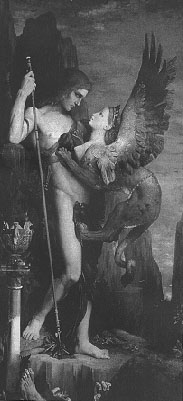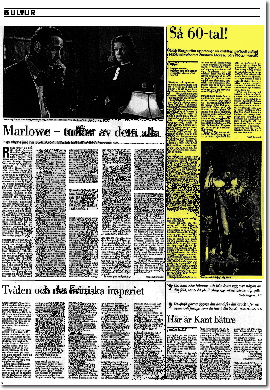
So sixties! That's the thought which strikes me and stubbornly clings to the mind. There may be a renaissance pattern for the design, but the emotional impact makes Procol Harum's A Whiter Shade of Pale sound in the back of one's head. The Muses are reproduced with closed eyes and venerable faces, some of them levitating (...) It is not only the bodies, thin as Twiggy's, that carry the associations more than thirty years back in time, but also the sublime state of trance that the painting expresses. A mild scent of marijuana emanates from the picture.
'If you could be intoxicated all the time,' wished Moreau's contemporary Baudelaire ... the notion that intoxication holds a key to insights and knowledge otherwise concealed was especially popular during the second half of the 19th century (...)'
